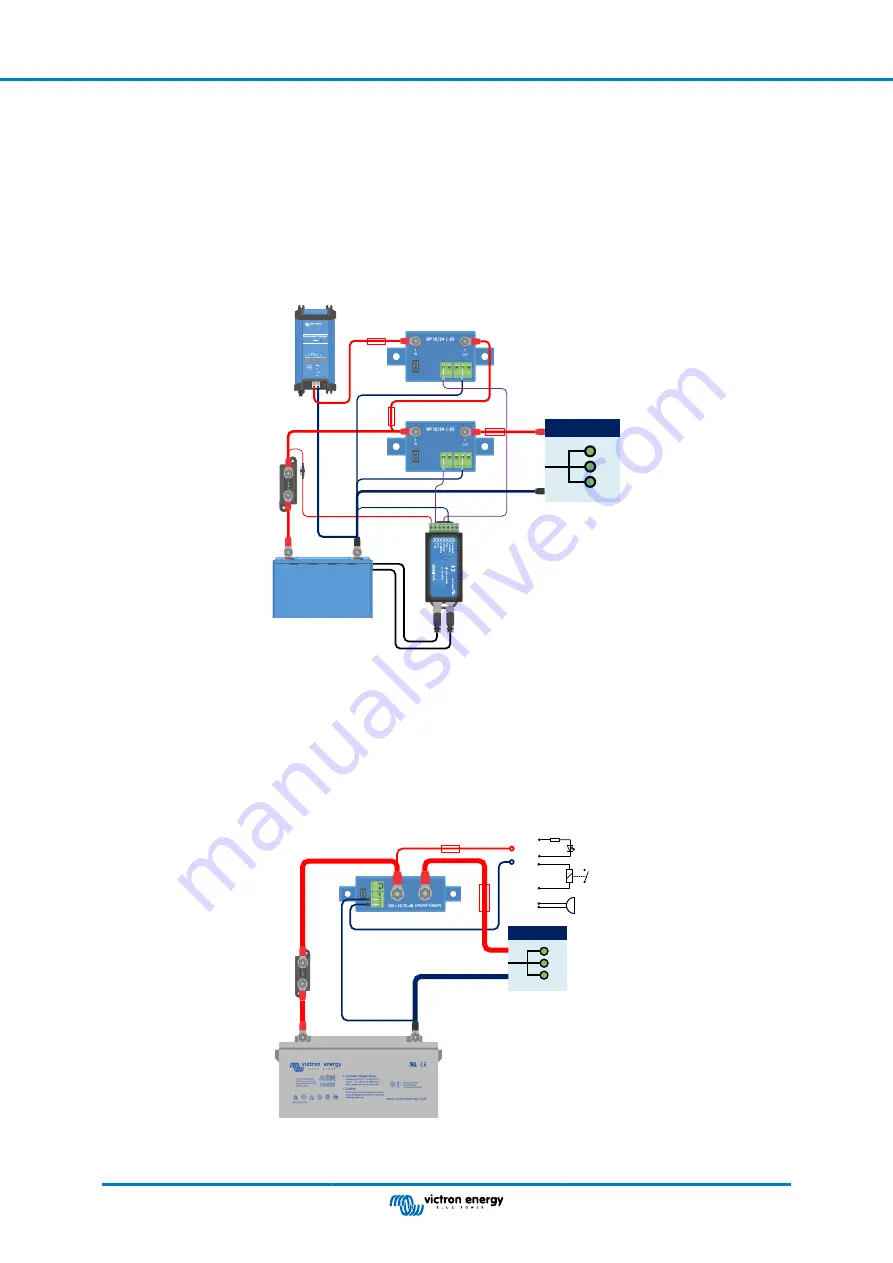
3.3.5. Two BatteryProtects for load and charger control
It is also possible to have several BatteryProtect in one system, for example, to control chargers and loads at the same time.
If the BMS signals a cell undervoltage, the BP responsible for the load will disconnect the load from the battery to protect the
battery from further discharge.
If the BMS signals a cell overvoltage or too low temperature to charge the lithium battery, the BP will disconnect the charger from
the battery immediately.
Please also note the correct connection of the BPs: always follow the current flow from IN to OUT. The positive terminal of the
charger goes to the IN input of the BP.
DC loads
BP-65
(charge disconnect)
BP-65
(load disconnect)
Two BatteryProtects take control of a charger and a load circuit
3.3.6. BatteryProtect Alarm output wiring
The alarm output can be wired e.g. to an LED, a buzzer or a relay. For this, the BatteryProtect must be programmed in the
respective mode because of slight differences in the behavior. See also the section
for more details.
Make sure that the LED, buzzer and relay match the system voltage.
DC loads
LED
Buzzer
Relay
Wiring an LED, Buzzer or Relay to the BatteryProtect output
BatteryProtect 12/24V
Page 8
Installation and wiring examples





























